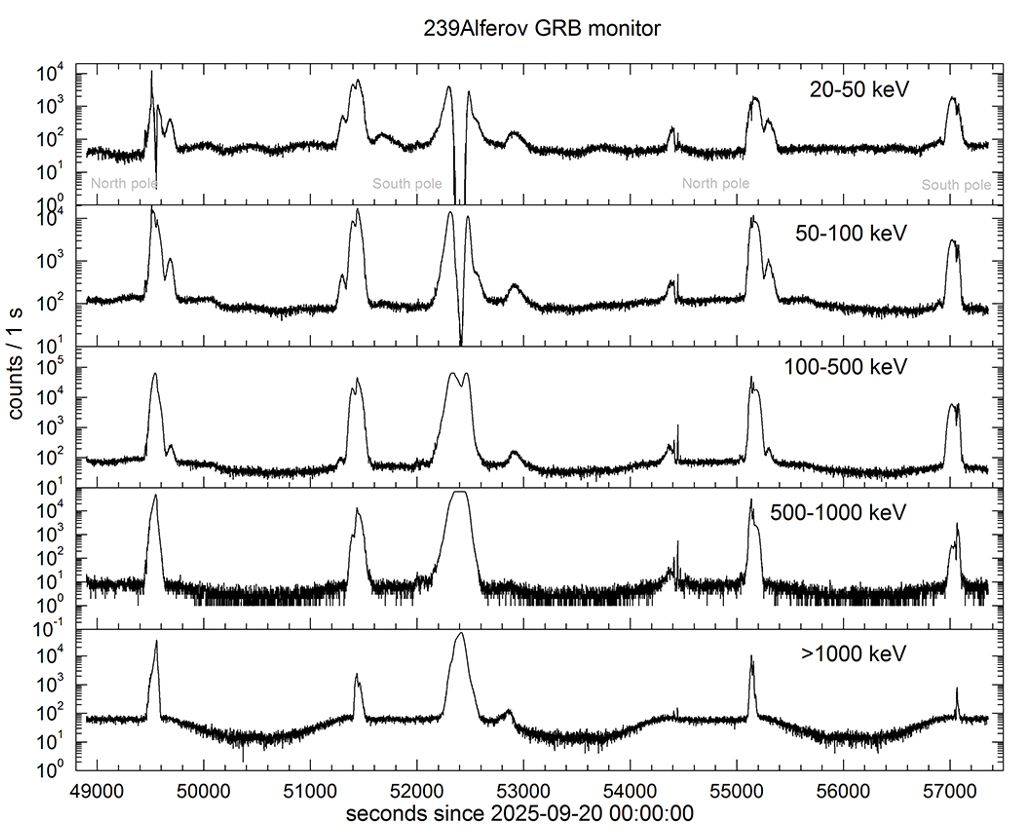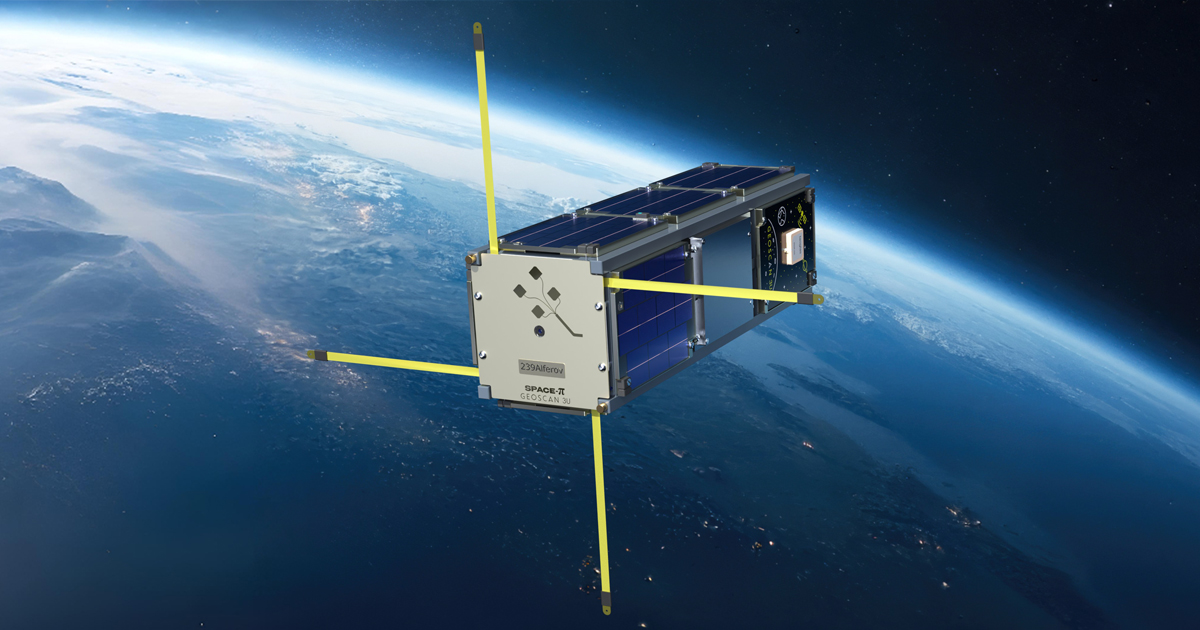On September 27, 2025, the 239Alferov satellite commenced its operational phase in orbit. The onboard gamma-ray spectrometer has started routine observations and is currently almost continuously collecting data on radiation in near-Earth space.
The gamma-ray spectrometer aboard 239Alferov consists of sodium iodide thallium doped (NaI(Tl)) scintillator viewed by silicon photomultipliers. It is designed to detect powerful gamma-ray bursts originating beyond our Galaxy that helps scientists to better understand the physics of cosmic explosions up to distances corresponding to few hundred million years after the Big Bang.
Before entering its scientific mission, the gamma-ray spectrometer underwent two test runs to verify its performance. The first one took place on September 20 at 13:35 UTC and lasted 140 minutes — roughly one and a half orbits around Earth.
During the test, the detector recorded count rates in the five energy ranges: 20–50 keV, 50–100 keV, 100–500 keV, 500–1000 keV, and above 1000 keV. Throughout the test run, the spectrometer detected charged particles trapped by Earth’s magnetic field.
The count rate plot clearly shows that the rise and fall in detected particles occurred as the satellite passed through the Earth’s trapped radiation belts — near the magnetic poles and within the South Atlantic Magnetic Anomaly. This correlation confirms that the gamma-ray detector accurately responds to variations in the radiation environment and is correctly performing its scientific function.

The figure illustrates temporal variations of the count rates of high-energy particles (protons, electrons, and gamma quanta) detected in different energy bands. The temporal resolution during test run was one second
During further long-term runs the mission will collect background data of the gamma-ray spectrometer. These measurements will help update radiation heat maps at the satellite’s orbital altitude and identify regions where high background levels prevent the detection of gamma-ray bursts. By mapping these zones, 239Alferov will be able to automatically suspend data acquisition in such areas — reducing false triggers and optimizing power consumption.
“After optimizing the observation program, 239Alferov will be used to monitor cosmic transients jointly with other space instruments — such as the Konus experiment aboard the Wind spacecraft, and the gamma-ray detectors onboard Swift, Fermi, SVOM, and other near-Earth and distant observatories. Combined data analysis will improve burst localization capabilities which will help to gain deeper insights into the nature of high-energy processes in the Universe,” said Dr. Dmitry Svinkin, researcher at the Laboratory for Experimental Astrophysics, Ioffe Institute.
Alexander Khokhlov, Head of Small Spacecraft Projects at Geoscan, noted that the launch of 239Alferov represents a significant milestone in the development of the Space-π educational program. The satellite is the first spacecraft in the specialized Hunters for Supernovae constellation.
In the future, several small astrophysical satellites are scheduled for launch in 2027. Three of them will be developed by Geoscan in cooperation with the Laboratory for Experimental Astrophysics (LEA) of the Ioffe Institute. The first satellite of this series will also involve participation from the Autonomous Nonprofit Organization “Development of Space Education.”
Experiment supervisors: Dr. Dmitry Frederiks and Dr. Dmitry Svinkin (Laboratory for Experimental Astrophysics (LEA), Ioffe Institute)
